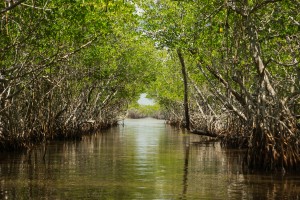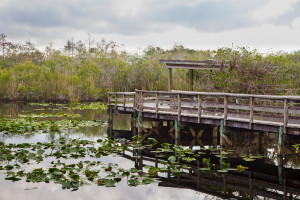 How much do you know about the Everglades? Even though this area is a National Park, the average person may not know a lot of details about this wetland, especially if they do not live near it. In the national news, people are hearing about the Everglades restoration, but may not know a whole lot about the Park itself and its importance to the ecosystem of the area. The Everglades is a truly mystical place, so we wanted to share with you some fun, interesting, and maybe even little-known facts, about it.
How much do you know about the Everglades? Even though this area is a National Park, the average person may not know a lot of details about this wetland, especially if they do not live near it. In the national news, people are hearing about the Everglades restoration, but may not know a whole lot about the Park itself and its importance to the ecosystem of the area. The Everglades is a truly mystical place, so we wanted to share with you some fun, interesting, and maybe even little-known facts, about it.
- The Everglades is a slow-moving river.
- Before mankind moved into southern Florida, the Everglades was a much bigger place. In fact, it was 50 percent bigger, but construction and drainage has caused the Everglades to shrink in size. It used to be around 8 million acres.
- It is the only place in the world where alligators and crocodiles coexist.
- Around 7-8 million Florida residents get their water from the Everglades.
- It is the largest continuous sawgrass prairie in North America.
- It is a World Heritage, a Biosphere Reserve, and a Wetland of International Significance.
- 13 endangered species and 10 threatened species live in the Everglades.
- It is home to the Western hemisphere’s largest mangrove ecosystem.
- Native Americans, who lived around the Everglades referred to it as Pahayokee, which translates to “grassy waters.”
- It is the largest subtropical wetland ecosystem in North America.
- The most dominant life form in the Everglades is the periphyton, an algae/microbe that floats on the surface of the water.
- The first people to inhabit the Everglades were the Calusa Indians around 1000 B.C.
- Although iconic now, airboats weren’t common in the Everglades until the 1950s.
- There are no underground springs in the Everglades, but the Floridian Aquifer (reservoir) lies 1,000 feet below.
- 36 protected species live in the Everglades.
It’s certainly interesting to read fun facts about the Everglades, but it’s even more amazing to experience this River of Grass in person. There’s no place like it in the world! An airboat tour through the Park is a great way to take in all the sights, smells, and sounds. To book an airboat trip with Captain Mitch’s Airboat Tours, click here or call 800-368-0065.
 Want to take a trip to the Everglades? It’s certainly a once-in-a-lifetime experience for many. On an airboat tour with Captain Mitch, you’ll be able to get up-close views of the beautiful surroundings, along with the opportunity for many wildlife sightings. However, people often have many questions before entering the Everglades. The National Park Service has many Frequently Asked Questions (FAQ) on its website to help people be better prepared for their trip to the Everglades. Below, we wanted to share some of these questions with you, so you can have a great time and feel comforted knowing as much as possible before you jump on a tour and explore the wetland.
Want to take a trip to the Everglades? It’s certainly a once-in-a-lifetime experience for many. On an airboat tour with Captain Mitch, you’ll be able to get up-close views of the beautiful surroundings, along with the opportunity for many wildlife sightings. However, people often have many questions before entering the Everglades. The National Park Service has many Frequently Asked Questions (FAQ) on its website to help people be better prepared for their trip to the Everglades. Below, we wanted to share some of these questions with you, so you can have a great time and feel comforted knowing as much as possible before you jump on a tour and explore the wetland.





